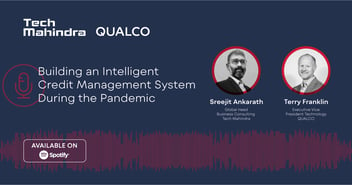Harnessing the Power of Data in Debt Collections
QUALCO |
How Covid-19 changed the face of the lending industry?
The debt collections sector is facing several challenges, like many other sectors across Europe. Changing customer behavior due to the deterioration of their financial circumstances have led to an uptick in debt and collections activities as well. To navigate through uncertainty, creditors need to adapt their strategy quickly. That brings us to the burning question of how can they refine their collections and recovery processes in a post-Covid world to achieve financial stability and ultimately growth?
To answer this question someone will have to take into consideration multiple aspects. A vital point that needs to be stressed is the fact that customers who paid on time before the pandemic, might not be able to do so now. As for the customers that didn't cover their debts even before Covid, they are probably falling into collections more frequently these days. That makes clear the need for financial institutions to apply different recovery strategies according to the segment a customer is included.
Another important aspect is the restrictions placed around debt collections efforts to protect customers. From France and Germany to Spain and the United Kingdom, governments have imposed moratoria to protect and facilitate distressed customers. Even when these protections end, it is likely that many customers won't still be able to pay their debts.
All the above combined with the extremely competitive marketplace, where customer demands are always increasing, require the implementation of a robust roadmap by lenders to avoid the risk of distress or default.
Putting the game plan together
The creation of a comprehensive plan will allow financial organisations to manage their credit risk efficiently, improve the collections process and help the customers that most need it.
Among their priorities to accomplish their goals, should be the following:
- Map the existing marketplace and create a solid understanding of the business environment
- Control their cash collections and liquidity risk
- Evaluate their exposure and identify resilience opportunities
- Identify the customers that are struggling to pay
- Support customers that are susceptible to default with payment flexibility options
There has been much discussion around prescriptive and Predictive Analytics in the past years. Even if it has been widely accepted that they enable the transformation of the collections process and increase ROI significantly, it is a practice that is surprisingly underutilised.
By harnessing the power of Analytics, organisations manage to:
Enhance their collections approaches
Increase their cash flow
Reduce their operational costs
Maintain a 360 view into the evolution of their portfolios
Advanced Analytics are the backbone of the personalised treatment customers expect, especially around the sensitive issue of debt collection.
Only by being able to recognise in the early and pre-delinquent stages, which customers are having trouble to cover their financial obligations, financial institutions will have the time and the data available to adapt their collections strategy and operations.
Advanced data analytics: a key enabler for more efficient debt collection
In that context, analytics can bring true value for lenders. How can this be achieved in practice? By empowering them to identify risks and adapt their strategies to segments that share common characteristics. The use of a wealth of internal data, sophisticated algorithms and automated models give an overview of the customers that are likely to default but it doesn’t end there. They will also show how companies can obtain payment from those customers.
That is where a world of opportunities awaits. By using state-of-the-art technology to segment their customers, lenders will be armored to make better-informed decisions. For example, a customer who recently lost their job. By acknowledging his condition, the financial organisation might be able to offer a temporary freeze or a personal settlement plan to accommodate the situation.
With the right approach, creditors can go a long way in delivering customer-focused experiences, enhancing their resilience and increasing their growth.
#NEW PODCAST
Tech Mahindra together with QUALCO, proactively optimise collections process across the Financial Services (FS) customer journey. We utilise the most suitable contact channels and then offer contextual solutions that ensure customer and business sustainability while enhancing the value of collections.
.jpg)


-1.png?width=352&name=1200x628-Amplifying%20Return%20on%20Experience%20(ROX)-1.png)